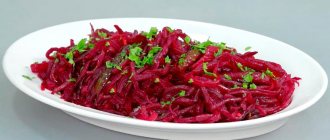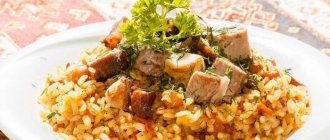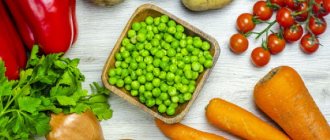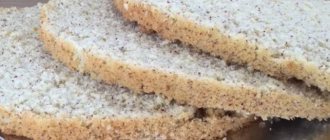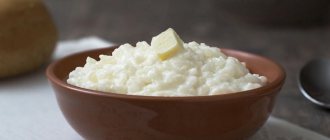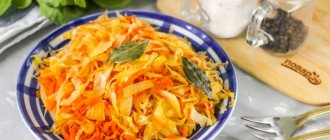Hot borscht is a universal dish that every housewife uses. Tasty and very healthy, it will be an excellent option for lunch and dinner. The dish turns out not too expensive, rich. Supplement it with sour cream and a crust of black bread, and the result will be delicious. But often housewives are faced with the fact that children refuse their mother’s creation, demanding that they cook borscht like in kindergarten.
No reason to be offended
Often mothers are really offended by their children. Of course, spending so much time in the kitchen and seeing your baby’s dissatisfied face is not very pleasant. But if your child persistently asks for borscht like in kindergarten, maybe you should learn how to cook it? It's not as difficult as it seems at first glance. You can interrogate the chefs, they will happily tell you their secrets. And today we will collect different options for preparing delicious borscht in one article. This will be useful for young mothers and experienced housewives.
Special approach
Why do kids refuse traditional rich soups? Most often, they intuitively understand that this food is not suitable for their delicate stomach. That's why they ask for borscht like in kindergarten. The chefs there are well acquainted with the peculiarities of children's and dietary nutrition. The ideal option is cabbage or beetroot. These are lighter versions of borscht that are well suited for children.
Beetroot soup is not much different from borscht. This dish, indispensable for baby food, should be on the menu almost constantly. Children usually eat it with great pleasure. In turn, this hot soup normalizes digestion processes. But, of course, it needs to be cooked according to special rules. It depends on the age of the child who will eat it. Therefore, we will consider several options.
Is it possible to have borscht for a child from 6 months to a year?
Complementary foods begin to be introduced at 4 months. Gradually, the baby gets acquainted with different vegetables, which are introduced into the menu pureed. But borscht can only be cooked from 8 months, but before that it is worth considering some important points:
- borscht is prepared only from those products that are already familiar to the baby and do not cause allergic reactions; a recipe for a 10-month-old baby may contain meat broth, but as low-fat as possible. It is better to cook with a secondary broth from lean meat;
- For children from 10-11 months, you can add beets, but first you need to separately introduce the baby to the root vegetable; all vegetables are placed raw and finely chopped, no frying is done (light sautéing or simmering is allowed);
- Do not cook a dish with legumes under any circumstances, because it can cause intestinal upset, flatulence and other problems;
- if you don’t like the lean version, you can add separately boiled meatballs from minced turkey or chicken breast;
- For older children, you can prepare nutritious and healthy borscht, like in the garden, or from rabbit in pots.
If you have vegetables grown on your own land and without chemicals, we recommend making borscht for the winter for your child.
First meeting
When thinking about what to cook for their child, many parents remember borscht as in kindergarten. Of course, this dish is very healthy, but you shouldn’t rush to introduce it into your diet. Typically, pediatricians allow children to be given borscht from the age of one year. But if your baby is prone to allergic reactions, then it is better to wait until two years. Regardless of the baby’s health condition, a number of rules must be followed:
- All products included in this dish should already be familiar to the child. Give them separately from each other so that you are completely sure that his body is able to tolerate them.
- You should start with a small portion.
- You need to cook borscht using water or low-fat broth from chicken breast or boneless veal.
- Beans and mushrooms, spicy seasonings and garlic are excluded.
- Frying is unacceptable.
If you ask old chefs how to prepare borscht in kindergarten, they will first of all tell you these rules. This is the basis of dietary nutrition.
Time for introduction
Since borscht is a multi-component dish, its full introduction is possible only when the baby has previously tried each product separately, and this acquaintance occurred without consequences. The average age for this dish to appear on the menu is 1 year. By this age, most children are already devouring many vegetables, including red ones. They usually appear in the diet in the following order:
- Potatoes begin to be given to artificially raised children at 6 months, and to infants at 7 months.
- Carrots appear in the diet at the age of 5-6 months.
- Cabbage is allowed in food from 8 months for those on breastfeeding and from 7 months for babies on formula.
- Boiled onions should be given no earlier than 8 months.
- Beets are introduced at 8-9 months. An exception may be the baby’s tendency to constipation, then it can be used from 7 months.
- At the ninth month of life, the child is allowed to try lean varieties of meat.
- Tomato juice is allowed in food from 10 months. Fresh tomatoes of yellow and orange colors are allowed to be placed in a dish for a one-year-old child. Later, you can try a red tomato, after pouring boiling water over it and removing the skin.
Recipe for the little ones
Previously, children were admitted to kindergarten when they reached one year old. Of course, one of the main dishes was porridge. But soups were also prepared daily. And of course, the recipe for children's borscht was adapted for the little ones. You don't need many ingredients to prepare:
- Water - 1 liter.
- Potatoes - 100 g.
- Veal, cabbage and beets - 50 g each.
The meat will need to be pureed using a blender. Boil water, at the same time wash the vegetables well and chop them using a grater. First of all, put the vegetable mass into the pan, and after 10 minutes add the meat. Another 15 - 20 minutes and you can turn it off. Borscht is prepared without salt and spices, taking into account age characteristics. As your baby gets older, you can add salt in minimal quantities.
At what age should it be given?
Doctors recommend introducing a child to beets at 8-9 months. If your baby has a tendency to constipation, this root vegetable can be included in the complementary feeding menu a little earlier, for example, at 7 months. For children prone to allergies, beets are added to the diet later, for example, at 10 months or a year.
However, it is recommended to choose beet puree as the first beet dish given to a child, adding it to other vegetables in an amount of no more than 1/3 of the total volume of the vegetable dish. You should try borscht for the first time no earlier than the baby turns 1 year old.
In addition, there are also such restrictions:
- To prepare such a dish, you should take only those products that the baby has already tried.
- The use of meat broth during cooking is acceptable, but it should be freed from fat as much as possible.
- If a child is preparing borscht without meat broth, then separately boiled meat can be added to the finished dish.
- Bone broth should not be used when preparing dishes for children under 3 years of age.
- It is recommended to add sour cream no earlier than 1.5-2 years.
From two to three
As the child grows, the body's need for energy increases. Accordingly, the recipe for borscht, as in kindergarten, will need to be adapted to age characteristics. This borscht already resembles the one we prepare for ourselves, but still it has characteristic features that you need to know about. To prepare you will need:
- Low-fat broth - 1 liter.
- Meat - 150 g.
- Cabbage, potatoes, beets - 100 g each.
- Tomato paste - 40 g.
- Sour cream.
- Greenery.
Simple and affordable products, but the result is delicious red borscht, just like in kindergarten:
- Cut the potatoes into cubes.
- The carrots need to be coarsely grated.
- Bake the beets in the oven, peel and grate.
- Cut the meat.
Boil water and add vegetables. After about 15 minutes, you can add the meat and let it simmer for another 5 minutes. All that remains is to add beets and tomato paste, add a little salt. After about 5 minutes, you can turn off the heat and add the herbs. Sour cream is usually added before serving, but for children it is recommended to heat treat it by placing it in the pan a couple of minutes before turning it off.
We are growing
By the age of two, most children can tolerate a shared table normally. And even mothers of allergy sufferers are beginning to think about how to cook borscht like in kindergarten, so that the most capricious baby will ask for more. To do this you will need a standard set of products:
- Low-fat broth - 3 servings.
- Boiled meat - 150 g.
- Beets, carrots, cabbage, tomatoes - 100 g each.
- Onion - 1 pc.
Vegetables need to be washed and prepared for processing. Cut the onion into cubes, chop the remaining vegetables on a grater. It is recommended to disassemble the meat into fibers or cut it as finely as possible. Rub the tomatoes through a sieve. The first step is to place the beets in a frying pan, add tomato puree and a few tablespoons of water. Simmer until done. Place all the vegetables in the boiling broth, add the meat and cook for another 20 minutes.
Classic borscht
It is suitable for feeding children over 3 years old, that is, just for feeding kindergarten-age children. It is this option that we will dwell on in more detail and consider a step-by-step recipe for borscht as in kindergarten. You will need the following list of ingredients:
- Low-fat broth - 1 liter.
- Vegetables - 300 g each.
- Vegetable oil.
- Tomato paste - a tablespoon.
- Meat - 150 g.
- Sour cream - 40 g.
Now let's go into a little more detail. To make the dish really tasty, the chefs resort to a little trick. The beets are cleaned and immersed in water along with the whole meat. This is how it cooks, giving an excellent taste to the broth and at the same time maintaining color. And just before the borscht is ready, it is pulled out and grated. All that remains is to fry it for a few minutes with a spoonful of oil and add it back to the broth. The color turns out simply fantastic.
- Wash the meat and place it in a saucepan. Fill with water and put on fire. Don't forget to remove the foam.
- When the water boils, it's time to add the beets. Leave to cook for an hour.
- Fry the tomato paste in the remaining oil.
- Chop the onion and grate the carrots. Fry them in butter.
- Place potatoes, onions, carrots and cabbage cut into bars into the boiling broth.
- When the cabbage becomes soft, add beets, sour cream and herbs. Boil for another two minutes and remove from heat.
The borscht should stand for a few more minutes to fully develop its bouquet. After that, pour it into plates and call the children to the table. It has a delicate taste and aroma that even kids who are picky about food will surely enjoy.
Preparation
For babies
An introductory version of borscht for a toddler will consist of products familiar to him: potatoes, carrots, beets, cabbage, meat. It can hardly be called a full-fledged borscht, but even with such a meager list of ingredients, there are many recipes that differ in the stages of adding products and cutting them.
However, the general recommendations for preparing soup are the same:
- Before cooking, each vegetable is thoroughly washed and always doused with boiling water;
- the cutting should be fine, and some vegetables should be grated;
- The ingredients are cooked until fully cooked so that they are soft.
In the finished broth with vegetables, you can add finely chopped meat, which was previously boiled separately.
For children over one year old
The cooking technology is no different from the adult version, but everyone prepares borscht differently. Therefore, we will leave a hint regarding the order of adding the components of the dish, as well as the duration of their cooking:
- Place a saucepan with 1 liter of water on the fire and bring it to a boil;
- put finely chopped potatoes into the water;
- after 15 minutes, add carrots and beets grated on a coarse grater (1 small piece each);
- after boiling, add thinly sliced white cabbage (about 100 grams);
- Bring all vegetables to readiness (5-10 minutes);
- add boiled meat, cut into small cubes or divided into small fibers;
- bring to a boil and simmer for 5 minutes.
Basic Rules
Now you know how to cook borscht. In kindergarten they do it exactly the same way, and most of the pupils really like the result. Let's once again emphasize the basic rules that must be taken into account:
- Kindergarten borscht is a hot vegetable soup. It can be cooked in meat broth, water or beet broth. Since it is made for children, it is best to use beef or chicken breast.
- The main set of vegetables is beets, potatoes, carrots and cabbage. However, beets are never used raw.
- Beetroot soup is often supplemented with halves of boiled eggs and herbs.
- The finished dish is seasoned with sour cream, after which the heat treatment continues for another 2 minutes.
It is not recommended to use hot spices and seasonings. Children's stomachs cannot cope with such a load. Failures can lead to pain and disruption of the digestive system.
Adding New Ingredients
As the child gets older, his diet expands and is replenished with new products. Then the borscht is prepared according to the above recipe, adding new ingredients.
It is strictly not recommended to fry any ingredients at any age, since in the process of heating the oil, harmful toxic substances and carcinogens are formed in it. In the case of a child’s body, such components entering food are highly undesirable.
Serve borscht freshly prepared, because when reheated, some of the nutrients are lost.
To learn how to cook borscht for a child, watch the following video.
Source
The usefulness of borscht
Since this dish is rich in fresh vegetables, it is a source of vitamins and minerals. The usefulness of borscht is determined by the presence of organic acids in its composition. This dish has a very beneficial effect on the digestive system. It stimulates the intestines and cleanses them well. As a result, constipation is eliminated or prevented.
The beneficial substances contained in borscht have a beneficial effect on the functioning of the liver, heart and blood vessels, stimulate hematopoiesis and remove various toxic substances from the body. But you need to remember that this dish is multi-component. Therefore, before introducing it into a child’s diet, you must first check the tolerance of each component with an interval of at least 3 to 4 days. If your appetite is normal, there are no skin rashes or asthmatic problems, you can move on to dishes that are a combination of these products.
Benefits and harms
This type of soup, called borscht, is prepared using meat broth with the addition of a large amount of vegetables, which are rich in fiber and other beneficial substances. This is due to its positive effect on the gastrointestinal tract and the body as a whole:
In addition to a considerable track record of its best qualities, borscht can also have a negative effect on a tiny body. Let's consider situations where this liquid set of benefits can have a negative effect on a tiny organism:
Naturally, this food may turn out to be useless, and maybe even harmful, if the preparation or storage technology is not followed.
Option 1: Classic borscht like in kindergarten with beef broth
Borscht in the garden is not as thick and rich as a homemade dish. It is light, not greasy, based only on fresh vegetables and tomatoes. The dish can be safely introduced into a child’s daily diet and not worry that the stomach will protest or other problems will arise. The traditional recipe contains beets.
Ingredients
- 0.6 kg beef bones for broth;
- 0.7 kg of potatoes;
- 0.4 kg beets;
- 0.16 kg carrots;
- 0.08 kg of onion;
- 0.25 kg cabbage;
- 25 g tomato paste;
- 25 g butter;
- 25 g vegetable oil;
- 80 g sour cream;
- salt.
Step-by-step recipe for classic borscht like in kindergarten
In the garden, bone broth or meat and bone broth is prepared. Take the beef, wash it, put it in a pan and fill it with water. Add about 2.5 liters, we need 2 liters of broth at the end. There is no need to make an overly concentrated decoction; after a couple of hours, the bones can be removed.
Immediately put the beets to cook. Wash the root vegetables, add water, and place on the stove. No need to clean. After cooking, cool, peel and grate. Place the beets in vegetable oil and fry a little, add the tomato. It needs to be heated with beets for at least five minutes.
Cut the potatoes. In kindergarten, small straws are used, since children will not be very happy with large pieces. Place the potatoes into the pot with the beef broth.
Onions and carrots are chopped into small pieces and fried in butter. It is they who are added to the pan in the garden after potatoes, and not cabbage, as housewives often do. The onion should be boiled.
After the first sauteing, shredded cabbage is added. Add salt to the borscht and cook until the vegetables are soft.
Add beets sautéed with tomatoes. Stir and add more salt until desired taste is achieved.
No greenery is added to the garden, although this rule is often violated. But they season the borscht with sour cream right away. Boil the product separately, pour into a saucepan and stir. Turn off the stove.
In canteens, there are usually large electric panels on which the dish is infused for about half an hour; this technique allows you to obtain a simmered, uniform taste. At home, you can heat the borscht over low heat without letting it boil.
Calorie content of foods possible in the dish
- Onion - kcal/100g
- Jacket potatoes - kcal/100g
- Fried potatoes - 192 kcal/100g
- Ripe potatoes - kcal/100g
- Boiled potatoes - kcal/100g
- Baked potatoes – kcal/100g
- Mashed potatoes – 380 kcal/100g
- Green cabbage - kcal/100g
- Fresh frozen green cabbage in packaging - kcal/100g
- Boar ham – 113 kcal/100g
- Pork – lean roast – 184 kcal/100g
- Pork - chop on the bone - 537 kcal/100g
- Pork – shoulder – 593 kcal/100g
- Pork - schnitzel - 352 kcal/100g
- Fatty pork – 333 kcal/100g
- Pork meat – 357 kcal/100g
- Beetroot - kcal/100g
- Boiled beets - kcal/100g
- Dried beets - 278 kcal/100g
- Carrots - kcal/100g
- Boiled carrots – kcal/100g
- Dried carrots – 275 kcal/100g
- Bay leaf - 313 kcal/100g
- Sugar - 398 kcal/100g
- Granulated sugar - 398 kcal/100g
- Vegetable oil – 873 kcal/100g
- Tomato paste - kcal/100g
- Salt - kcal/100g
- Water - kcal/100g
Calorie content of foods: Pork, Water, Onions, Carrots, Potatoes, Cabbage, Beets, Sugar, Tomato paste, Salt, Bay leaf, Vegetable oil
Option 2: Quick recipe for borscht like in kindergarten
This dish is prepared very quickly, since the borscht is made with water. You can use pre-cooked light beef or chicken broth. The beets are prepared in an accelerated way, stewed in crushed form.
Ingredients
- 2 liters of water;
- 0.3 kg potatoes;
- 0.4 kg cabbage;
- 0.4 kg beets;
- 40 g butter;
- 30 g paste;
- 50 g onion;
- 120 g carrots;
- salt.
How to quickly cook borscht like in kindergarten
Start with beets. Peel raw root vegetables, grate or cut into thin strips. Heat half the oil and add. Fry for a couple of minutes, add tomato paste. Cook together for another five minutes, then pour in 100 ml or a little more water, cover and simmer until completely soft.
Throw the cut potatoes into boiling water and boil for about ten minutes.
While the potatoes are cooking, fry the carrots and onions in the remaining oil. As you can see, a little is always added; we chop the vegetable finely. There is no need to follow the sequence of adding it to the pan, just pour it all together.
Place the sautéed vegetables on top of the potatoes and add the cabbage. Salt the borscht and boil for a few minutes until all the vegetables are soft.
Add beets sautéed with tomato paste and stir. After boiling, reduce the heat and keep on the stove for ten minutes. Sour cream can be added to the pan or placed on plates when serving borscht.
If you don’t want to cook borscht in water, then the broth can be prepared in an accelerated way, using beef or other meat cut into small pieces. It will cook quickly enough, also do not forget to remove the foam when boiling.
Step-by-step recipe with photos
This is a borscht recipe just like in kindergarten. I reviewed several technological maps, the content of products in the maps of different gardens is slightly different (in particular, potatoes and tomatoes), sometimes borscht is cooked without potatoes.
Borscht according to this recipe turns out to be very tasty and aromatic, so advice for doubting parents - you can be sure that children in kindergartens are fed tasty, and most importantly, healthy. After all, children do not need fatty pork or beef, with which we often prepare soups and borscht at home.
Just try to cook this kind of borscht at least once in a while, I assure you, you will like it!
Take the products from the list.
It is customary to cook borscht in kindergarten using meat broth or water. Pre-cook the beets.
Add potatoes, cut into cubes, into boiling water or broth and cook for 10-15 minutes.
Cut the boiled beets into large strips.
Add to the broth with the potatoes.
Cut the onion into strips.
Carrots - also in strips.
Sauté carrots and onions in a frying pan with vegetable oil.
Add tomato paste.
Add vegetables poached with tomatoes into the broth. 5-10 minutes before complete readiness, add salt and sugar. The borscht is ready just like in kindergarten.
The serving yield differs for different age groups.
The technological map specifies the requirements for the quality and appearance of the final product.
The liquid part of the borscht should contain vegetables that have retained their cut shape and are soft in consistency. The color of the borscht should be raspberry-red, the color of the fat on its surface should be orange. The taste of borscht should be sweet and sour, with moderate saltiness.
Borscht is usually served with sour cream.
Bon appetit!
Aimkuk
Aimkuk
Aimkuk
Option 3: Borscht like in kindergarten without beets
In general, this soup is closer to Russian cabbage soup, but it is called borscht because of its red color. Only tomato is added, beets are not used according to the recipe. This further simplifies and speeds up the process of cooking borscht. The recipe simply calls for broth. It can be cooked from any meat or use lean poultry.
Ingredients
- 0.5 kg potatoes;
- 2 liters of broth;
- 0.5 kg cabbage;
- 0.08 kg of onion;
- 0.1 kg carrots;
- 0.09 kg paste;
- 4 tablespoons of oil.
How to cook
At home, you can cut potatoes in any way. Add to the broth, bring to a boil and reduce heat.
Grate the carrots, chop the onions, pour these vegetables into the heated oil, use half. Lightly fry and immediately transfer to the pan with the potatoes, let everything cook together.
After a few more minutes, add chopped cabbage and salt. Bring it to softness.
Pour the remaining oil into the frying pan and fry the tomato in it. You can use several large tomatoes instead.
I’m sharing something good: children’s borscht “Sadovskiy”
There is so much you can learn while working as a pediatric dentist! Even cook borscht. My mother came across a very serious toddler who came for a check-up. While my mother was getting into the patient’s mouth, chattering her teeth at the same time, the conversation somehow turned to “eating,” and then it turned out that my mother also had an elder who demanded borscht at home, “just like in kindergarten.” Mommy, this way and that, but still not the same! I had to send a scout-grandmother into the garden, who found out the secret! Now both sons enjoy eating “Sadovsky” borscht at home.
Girls, I cooked it myself – I almost swallowed a spoon! The same taste. And if you also consider that only healthy ingredients and technologies are used in the cooking process, I share it with everyone.
In a small saucepan - Katya and I eat together at a time - 2 medium beets, 2 potatoes, 1 small carrot, half an onion, a celery stalk, a small tomato.
Pour water into 1 pan, put it on the fire and lower the beets and carrots, washed with a brush, into the already boiling water. We make sure that it is boiling and reduce the heat to two. Cook for 25 minutes.
At the same time, boil water in another saucepan, add salt (moderately, but definitely) and add coarsely chopped potatoes, chopped onions and celery. Let it boil and turn it down to two.
Let's return to beets and carrots. Remove from heat, cool under running cold water, and peel with a knife. Cut the carrots into circles. Three beets on a fine grater. We transfer everything into a pan with boiling vegetables and wait until it boils again.
In the already boiling soup we put the chopped tomato, stripped of its skin (I have tomatoes in the freezer for this purpose: before using, I peel it with a knife under running tap water - it peels off perfectly!)
Let the soup continue to boil. Add a tiny piece of butter.
However. Katie is a terrible meat eater. That's why I always add meatballs to the soup at the end of cooking. If anyone is interested, I can share the recipe.
Since we only have three teeth, and the desire to chew is great, before serving, I mash the vegetables in a plate with a fork, crush the meatballs, and I can whiten them with baby yogurt or kefir. To cool faster, I transfer some of it to a shallow plate.
The whole trick of preparing beets this way is that it preserves both taste and color, thanks to which the borscht will be tasty and beautiful WITHOUT ADDING IMPROVERS AND ENHANCERS.
Option 4: Kindergarten-style borscht with meatballs
Meatballs are a great substitute for meat. They allow you to get a rich and satisfying dish without hours of cooking broth. In the garden, meat balls are made from beef with the addition of vegetables, and they do it in a simplified and healthy way in the oven.
Ingredients
- 2 liters of water;
- 2-3 potatoes;
- 2 beets;
- 2 onions;
- 1 small egg;
- 450 g beef;
- 1 carrot;
- 50 g butter;
- 50 g paste.
Step by step recipe
Put the beets to cook immediately after the broth, bring to softness, cool, cut or grate. Place in a frying pan with 20 g of butter. Lightly fry, add tomato paste to it. Simmer together for five minutes.
Throw the potatoes, cut into pieces, into the boiled broth. Immediately put a frying pan with oil, chop and fry one onion with carrots.
Finely chop the second onion, combine with the twisted beef, add a small egg or half, and season with salt. Wet your hands and roll into small balls. Place on a greased baking sheet and bake for 15 minutes at 200 degrees.
Add onion and carrot sauté to the potatoes, boil, and add shredded cabbage. Add salt to the borscht and cook for another ten minutes.
Add the beetroot sauté with the tomato, stir, and after boiling, add the meatballs. Now turn the heat to low and simmer the borscht on the stove for about 15-20 minutes.
If you first put sauteed beets into the pan, and then carrots and onions, the broth will not be so beautiful. A grayish or brown tint may appear. Carrots and onions cannot give off a golden color after adding a sour tomato.
Ingredients for 8 servings:
| ► 250 g beef brisket; | ► 300 g white cabbage; |
| ► 250 g potatoes; | ► 35 g tomato paste; |
| ► 100 g carrots; | ► 1.75 liters of water at room temperature; |
| ► 250 g beets; | ► bay leaf, salt, black pepper - to taste; |
| ► 2 cloves of garlic; | ► 30 g butter; |
| ► 1 onion; | ► greens, hot peppers, green onions - for decoration. |
Option 5: Kindergarten-style borscht made from whole beets
Very often in the kindergarten they prepare beets for borscht not separately, but immediately while cooking the meat. This technique allows you not to take up extra space on the hob, and also gives a beautiful ruby color to the base.
Ingredients
- 0.5 kg beef with bone;
- 2 beets;
- 3 potatoes;
- 1 onion;
- 1 carrot;
- approximately 0.4 kg of cabbage;
- 3 tablespoons of oil;
- 2 spoons of pasta.
How to cook
Pour two liters of water over the washed pieces of beef and place on the stove. Use a slotted spoon to remove the foam that appears when boiling.
Wash and peel raw beets. Add to the broth after an hour of cooking. Bring until soft, then remove. If the meat is already cooked, then remove it as well. Cool the beets and cut into small pieces.
Chop the potatoes and place them in a saucepan. Fry the onions and carrots in two tablespoons of oil and add to the potatoes.
Chop the cabbage and add it to the borscht after about five minutes.
Fry the tomato in the remaining spoon of oil, add chopped beets, heat a little and add to the cooked vegetables.
Add salt to the borscht and heat for about ten minutes to combine the flavors. Greens and sour cream are added as desired.
If the broth for borscht will be prepared from chicken, it is better to remove the skin in advance. It contains a lot of fat and other unnecessary compounds. The cooking time for poultry broth is no more than an hour, so the beets can be added immediately after boiling and removing the foam.
How to cook kindergarten borscht
Ingredients:
Preparation: Step 1
In kindergarten they start cooking borscht at five in the morning. And the first stage is preparing the broth. Usually in kindergarten, chicken cutlets are prescribed along with borscht. So the cartilage and bones from chicken breasts end up in borscht.
“Adult” nutritionists argue a lot about whether bone broth soups can be given to children. Some say it's not allowed. Others, on the contrary, do not deny the presence of bones. The main thing is that the broth is not too steep. Therefore, chicken cartilage is a very suitable business. And as practice shows, even a three-year-old child will not eat “empty” borscht, so gentle chicken “bones” add their nutritional value to the broth.
So, calculate for yourself how many bones or meat you need for your family, if Nina Evseevna puts about a kilo of nine hundred bones with scraps of meat pulp into a 50-liter pan. By the way, lean pork or chicken can also greatly enhance children's borscht. But this is home! And in the kindergarten, the bones are filled with cold, clean water and boiled for an hour and a half. Then the broth is filtered twice, the remaining meat is removed from the bones and sent to the broth, and the bones themselves are removed.
Step 2
Together with the broth, they begin to cook the beets. Bring it to readiness, peel it, grate it on a coarse grater and saute it in vegetable oil.
Step 3
Tomato paste is also subjected to heat treatment and sautéed in vegetable oil.
Step 4
While beets and tomato paste quietly “gurgle” over low heat, Nina Evseevna peels potatoes, carrots and onions. The potatoes are cut into cubes, the onions are finely chopped, and the carrots are grated. The potatoes are the first to go into the broth.
Step 5
The cabbage is cleaned of limp and rotten leaves and chopped into thin strips.
Step 6
Onions and carrots are sautéed in butter. And here we need special technological care, because the butter should not burn.
Step 7
When all the components of the future borscht are ready in different pans, the process of adding vegetables to the broth begins. After the potatoes, it’s time for the carrot and onion dressing. It goes into the pan as soon as the potatoes reach semi-softness. Sauteing helps the potatoes keep their shape and prevents them from boiling into liquid.
Step 8
After the carrots and onions are sautéed, it’s cabbage’s turn. It is added to vegetables and cooked until soft.
Step 9
In this picture, Nina Evseevna puts beets into a saucepan.
Step 10
At the next stage, sautéed tomato paste is added to the borscht. And here’s just one little culinary trick: if you swap the carrot-onion and tomato dressings, the borscht will be gray and ugly. Now you can add salt to the borscht.
Step 11
Sour cream is the last thing to go into kindergarten borscht. It is also boiled and sent to the pan. Nina Evseevna does not forget about the entertaining moment. Figures are cut out from parts of the beets using molds: cars, houses, mushrooms and flowers. After all, the food tastes better in the game. Borscht is served in kindergarten with bread or croutons.
Source
